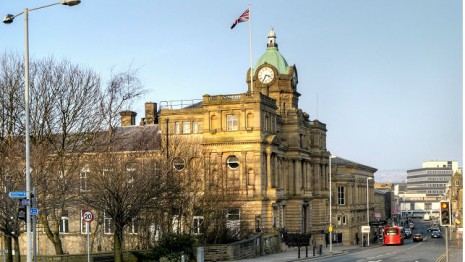Franchising, retail, business

07/08/2017 - Residential property prices in the UK edged up 0.4% in July but in the three months from May to July they were down by 0.2% while annually they are up just 2.1%, according to the latest index.
The figures from lender the Halifax show the average price of a home is now £219,266 and signal that while the property market is still growing, it is doing so much more slowly than perhaps expected.
A closer look at the figures show that the annual rate of growth is now the lowest since April 2013 when it was 2% and well down from the most recent peak of 10% in March 2016.
Nationally, house prices in July 2017 were 10% above their August 2007 peak and the average price of £219,266 is £64,603 or 42% higher than the market’s low point of £154,663 in April 2009.
The Halifax’s latest house price per square metre report shows that London continues to dominate the country’s list of the most expensive property locations on a per square metre basis. The average price per square meter across Britain has increased by 236% over the past 20 years from £672 in 1997 to £2,260 in 2017.
However, this national figure conceals considerable regional differences, with Greater London increasing by 402% in comparison to 147% in Scotland. Hackney has seen the largest increase in average prices per square meter since 1997 with prices rising from £814 to £6,942, or 753%, nearly twice the London average of 402%.
‘House prices continue to remain broadly flat, as they have since the start of the year. Prices in the three months to July were marginally lower than in the preceding three months, while the annual rate of growth has edged down from 5.7% in January to 2.1% in July, the lowest rate since April 2013,’ said Russell Galley, managing director of Halifax Community Bank.
‘The rise in the employment level by 175,000 in the three months to May helped push the unemployment rate down to 4.5%, the lowest since June 1975. However, this improvement in the jobs market has not, as yet, boosted wage growth, resulting in earnings rising at a slower rate than consumer prices,’ he explained.
‘This squeeze on spending power, together with the impact on property transactions of the stamp duty changes in 2016 now being realised, along with affordability concerns, appear to have contributed to weaker housing demand,’ he pointed out.
‘However, a continued low mortgage rate environment, combined with an ongoing shortage of properties for sale, should help continue to support house prices over the coming months,’ he added.
Jeremy Duncombe, director of the Legal & General Mortgage Club, pointed out that the market is resilient in the face of both political and economic headwinds due to Brexit and the unexpected 2017 general election which resulted in a Hung Parliament but he said that a long term plan to address the UK’s chronic lack of suitable housing remains vital.
‘Government and industry must come together, and soon, to make a conscious effort to resolve the housing crisis and create enough homes for our growing population, across all tenures, renters and buyers,’ he added.
The figures are a good sign, according to Russell Quirk, chief executive officer of eMoov. ‘Although prices are still down on the previous quarter and price growth is likely to remain fairly subdued for the remainder of the year, they continue to be up on an annual basis and given the current seasonality an increase no matter how small is a good sign during the peak of the summer months,’ he said.
However, Jonathan Samuels, chief executive of specialist property lender Octane Capital, warned that only the lack of properties for sale is preventing the market from deteriorating more quickly.
‘While the jobs market is strong, buyers are increasingly feeling the pinch due to stubbornly high inflation and low wage growth. Squeezed finances will invariably see new house purchases put on the back burner,’ he said.
‘At the higher end of the market, stamp duty has hit countless transactions. Prospective buyers cannot see much of promise on the horizon. There is a lot of economic uncertainty right now and the prospect of interest rates rising cannot be discounted,’ he pointed out.
‘Major question marks around the impact of Brexit are also causing many people to sit on their hands. Extremely competitive mortgage rates and high employment are helping the market tick over but it’s hard to see any change in the current limbo for the rest of the year,’ he added.